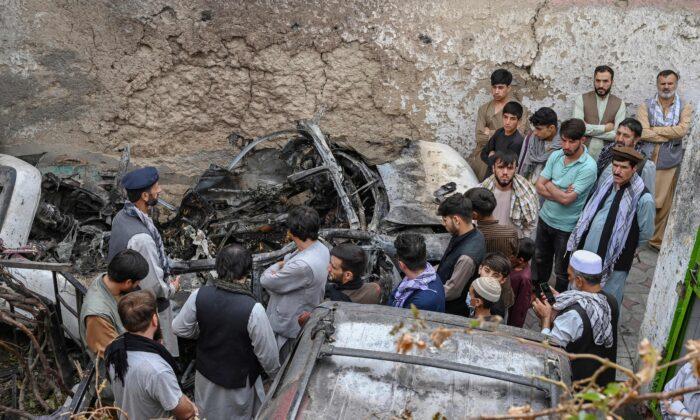The U.S. military continued to bomb Afghanistan after the Taliban struck a deal with the Trump administration in February 2020 to end the two-decade war, according to newly declassified airstrike data.
“Yet the newly released AFCENT data shows U.S. attacks never ceased.”
AFCENT conducted another 372 airstrikes in 2021. Most of the strikes, 226, were fired in the remaining three months of American occupation as the Biden administration tried to stave off collapse of the Afghanistan government.
Airwars said the data reveals that the Biden administration bombed Afghanistan more times than previously thought.
“Airwars has been cautioning for some time that recent airstrike numbers for Afghanistan—if revealed—might show far more US military activity under Joe Biden than many had assumed,” Airwars Director Chris Woods stated in a press release. “This newly released data—which should never have been classified in the first place—points to the urgent need for reevaluation of recent U.S. actions in Afghanistan, including likely civilian casualties.”
Along with revealing that the U.S. bombing campaign in Afghanistan continued throughout 2020 and 2021, the data also implicates the United States in more civilian deaths than previously thought, according to Airwars.
The nonprofit watchdog, launched in 2014 to track civilian harm in conflict zones, noted that 341 civilians were killed in 2020 by airstrikes. During that time, it was thought that fighting between the Taliban and the Afghanistan government was mostly responsible for the deaths, Airwars said.
According to Airwars, U.N. officials stated in 2020 that “they believed Afghan Air Force strikes were now likely responsible for almost all civilian deaths from airstrikes.”
“The release of the previously-classified data from AFCENT radically changes that picture,“ Airwars said. ”In fact, we now know, more than 370 ‘international’ strikes were carried out in 2021, which between them dropped more than 800 munitions.”
“What we saw here was a breakdown in process and execution in procedural events, not the result of negligence, not the result of misconduct, not the result of poor leadership,” Kirby told reporters on Dec. 13. “So I do not anticipate there being issues of personal accountability to be had with respect to the August 29 airstrike.”




